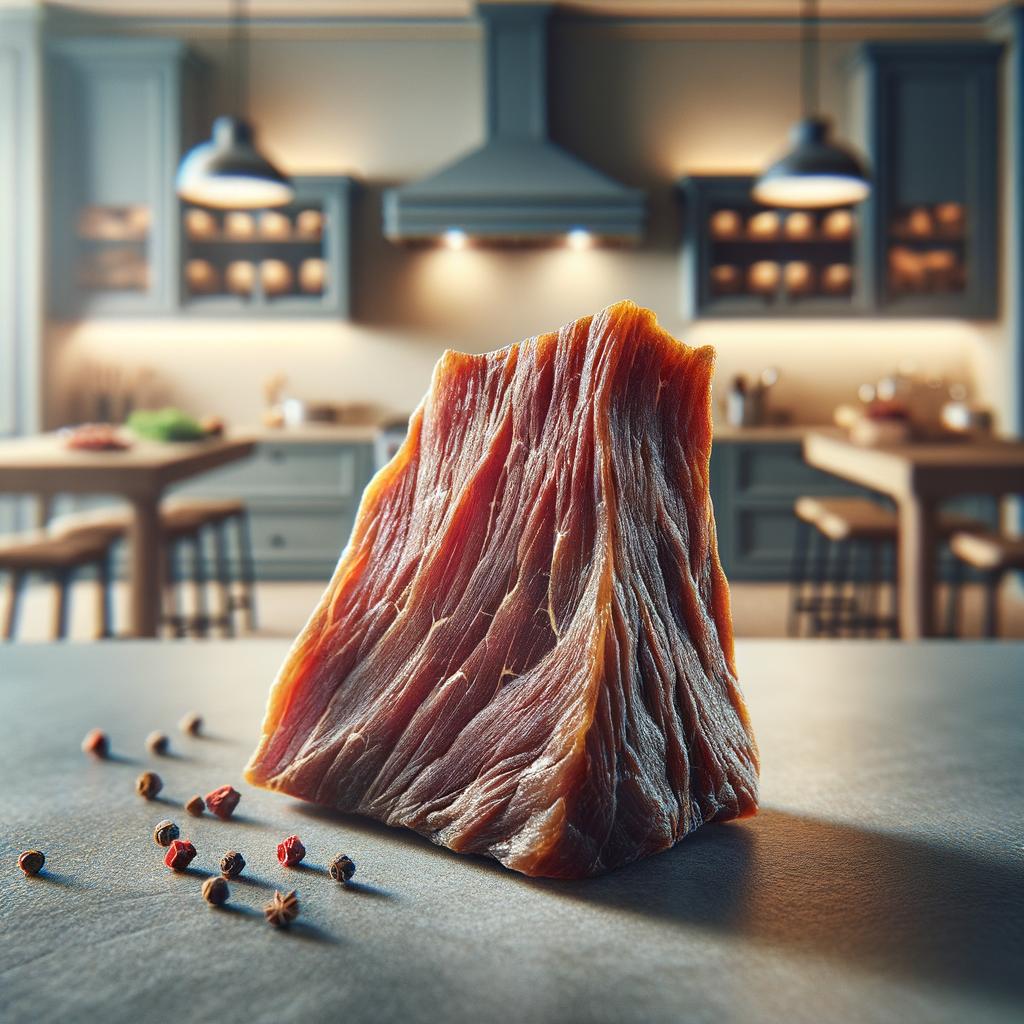Dried Beef

Description
Dried beef, a culinary delight, traces its roots back to the time when mankind first mastered the art of preserving food. This ingredient is a product of a careful process of curing and air-drying, resulting in a meaty delicacy that is as rich in flavor as it is in history. It boasts a deep, rich hue, ranging from a rustic brown to an inviting mahogany, a testament to its long journey of transformation. The texture is firm yet flexible, a pleasurable contrast to the tenderness of fresh meat. Its flavor profile is robust and concentrated, with every bite delivering a burst of savory, salty, and subtly sweet undertones. What sets dried beef apart from similar ingredients is its long shelf life and the depth of flavor it can add to a dish, even in small quantities.
Primary Uses
Dried beef is a versatile ingredient, finding its place in a myriad of dishes across various cuisines. It can be sliced thin and served with cheese and crackers for a simple yet satisfying appetizer. In American cuisine, it's a key component in the traditional dish "chipped beef on toast" or "S.O.S". In Brazilian cooking, dried beef, or "carne seca", is used in the iconic "feijoada", a black bean stew. Beyond culinary uses, dried beef has been a staple in military rations due to its portability and long shelf life, demonstrating its importance in survival and sustenance.
History
The history of dried beef is as rich as its flavor. Its origins can be traced back to ancient times when preserving food was a necessity for survival. Nomadic tribes would dry their meat under the sun, a practice that was later refined with the addition of salt for better preservation. Dried beef gained popularity in the military, particularly during World War II, as a reliable source of protein for soldiers in the field. Over time, it found its way into home kitchens, transforming from a survival food into a beloved ingredient. Folklore often associates dried beef with hearty meals prepared by loving mothers for their soldier sons, adding a touch of romance to its history.
Nutritional Information
Dried beef is a nutritional powerhouse, packed with protein, iron, and zinc. It provides a substantial amount of Vitamin B12, essential for the proper function of the brain and nervous system. However, it's important to note that dried beef can be high in sodium due to the curing process, so it should be consumed in moderation, particularly by those monitoring their sodium intake. Compared to fresh beef, dried beef has a lower fat content and a higher protein density, making it a good choice for those seeking high-protein, lower-fat options. Its rich history, versatile uses, and nutritional value make dried beef a cherished ingredient, a testament to mankind's ingenuity in food preservation.

